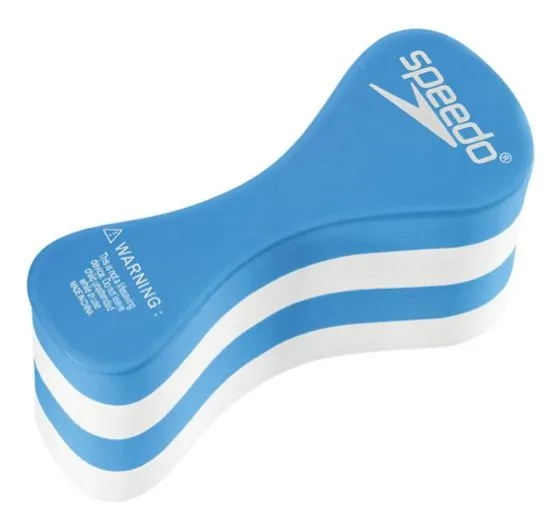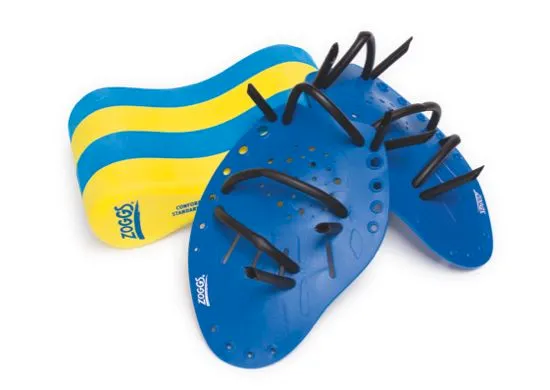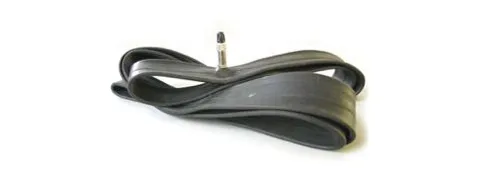Most tools are used by athletes to either perform technique work or work to isolate areas of the stroke and develop strength in key parts of the body.
Here’s what the most common tools all do:
Pull buoy

This figure of eight-shaped float is designed to fit securely between your thighs so you can swim without kicking. It helps to isolate the arm stroke when working on technique and can usefully mimic the flotation effects of a wetsuit that cause the body to sit higher in the water.
They can also be used to excuse tired legs from having to work too hard if you’re swimming after a big run or bike set. But there is a danger in becoming too reliant on them and developing a poor leg kick if the pool buoy is used too often.
Flat foam boards

These are used primarily to support the arms when doing leg-only kick drills. The board keeps your upper body supported so you can breathe with your head out of the water when kicking.
Hand paddles

These are curved plastic scoops that you strap in front of your palm to increase the surface area and, therefore, resistance to the water when pulling. They’re primarily used to increase upper-body strength. But they can also be used with or without a pull buoy to maximise the effect. Most swimmers tend to swim a little faster with paddles on.
Fins

Short little flappers that can be used to assist kick drills by increasing resistance at the feet. They also improve flexibility as the water applies more pressure to the ankle joint with them on. Can be used in conjunction with a kickboard to maximise the effect on the legs, or when preforming arm drills to increase speed without greatly increasing effort.
Bands

Often just made from cut-down old inner tubes, these rubber bands can be used to tie the ankles together when doing arm-only pull sets so that you can’t kick your legs. For most they can be used with a pull buoy, but for fitter athletes they can be used without to make things harder.
Using them without a pull buoy can also be useful as it can identify weaknesses in your arm stroke. Because, if you’re pulling incorrectly or inconsistently, your legs will tend to sink rather than staying higher towards the surface.
Do you use any of these tools? How useful are they? Let us know in the comments below!